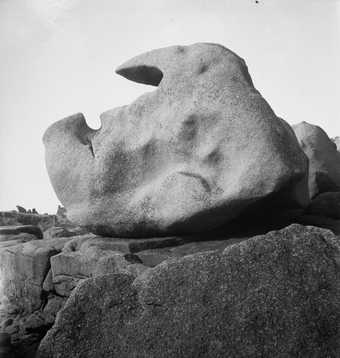Angel of Anarchy is an object rife with contradictions. As an artist, this appeals to me. I have admired Eileen Agar for some time. She was a refreshing and significant presence in the predominantly male camp of Surrealist artists active in Europe during the 1930s and 1940s, and her resolute head with its flamboyant garb continues to intrigue me. Is the angel’s blindfold a defiant act against world events (she had already endured one world war), or a nod of despair towards an uncertain future? The very notion of an angel of anarchy suggests a conflict of interests: should a celestial being incite lawlessness?
In my own practice, I am interested in the associations that a certain visual language may have acquired through time, and how I can interpret that language or vocabulary to say something today. In terms of a visual vocabulary, Agar’s angel defies the Cubist and Futurist language of her time. Not only has she dared to abandon conventional art materials and work with found objects, but her angel/warrior flaunts common forms of feminine decoration on a classical subject: the sculpted head. There is no artifice about this struggle. Patches and layers of materials fighting with each other are visible. It is not a representation of these objects, it is the objects themselves, but not as we may expect to see them. Agar was obviously well aware of the need to re-create chaos to build a new kind of order. She rose to the responsibility of both looking at her world and pushing on from what may become conventional in visual language at a certain time.
However radical and vivacious Angel of Anarchy may still look today, maybe this object and what it stands for isn’t such a contradiction. Instead, it may be a breath of sanity. For me, it is a reminder that rebellion should be divine and imperative for art and society at large. I believe Agar is seeing clearly and daring us to do so too.
Angel of Anarchy was presented by the Friends of the Tate Gallery in 1983 and is on display at Tate Modern.

